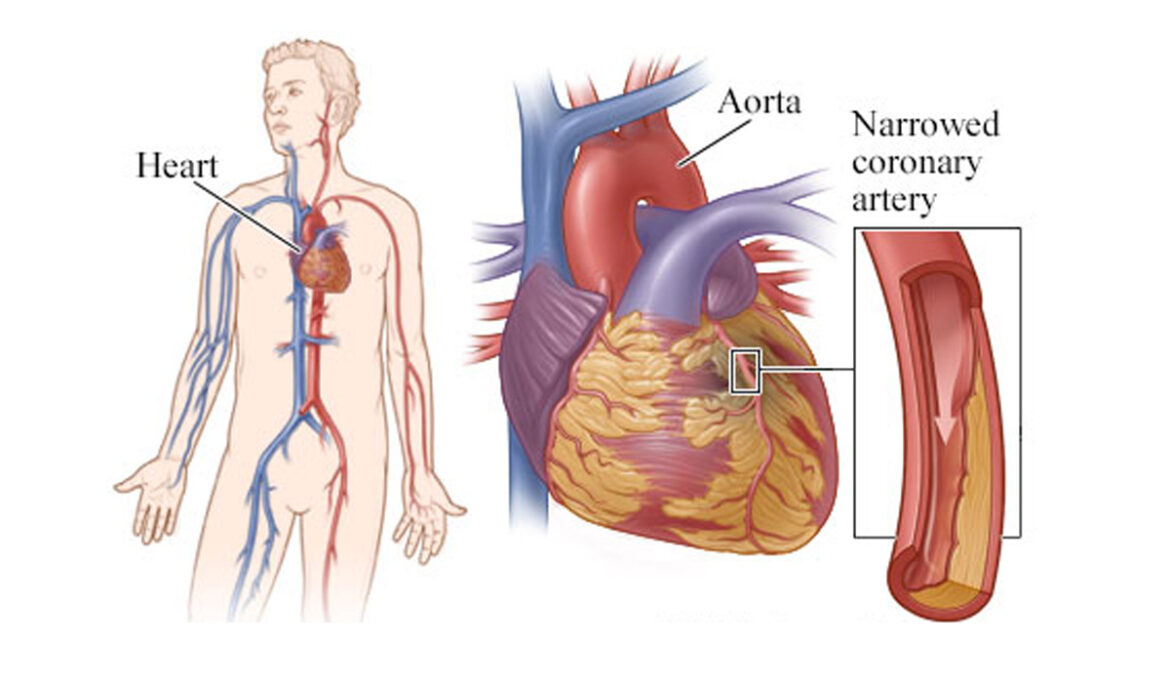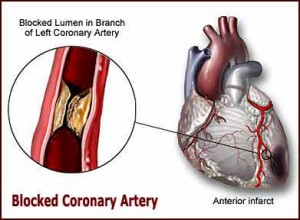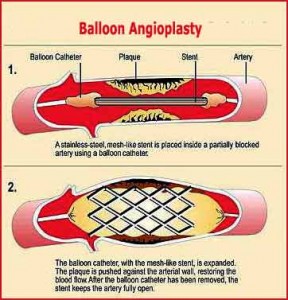Well, if you always thought that blocked coronary arteries were similar to a blocked pipe, then you are right, but only to some extent. Thus read about blocked coronary arteries, here are the things you should know but didn’t:
Coronary Artery Disease
The heart is surrounded by the coronary arteries. Their work is to pump blood throughout the body. In the same manner like the rest of the body, a constant supply of oxygen is also required by the heart. Coronary Artery Disease (CAD), also known as Coronary heart disease involves that state when fatty deposits, called plaque, accumulate along the innermost layer/ walls of the coronary arteries. This process may start in childhood and continue to thicken throughout the life. When atherosclerosis (thickening) occurs, the arteries get narrowed and the blood flow is either decrease or blocked.
Symptoms of Blocked Arteries

The symptoms of CAD depend on the extent of the disease. They are different in different people. The symptoms include:
- Angina or chest pain (if too little oxygenated blood reaches the heart)
- Heart attack or silent attack in some
- Weakness
- Low energy/ Tiredness
- Shortness of breath
- Heaviness/ tightness/ pressure or pain in the chest (behind the breastbone)
- Pain transfers to the jaw, arms, shoulders, neck and back
Risk factors
Risk factors are the following:
- High LDL cholesterol
- Age
- High blood pressure
- Lack of activity
- Smoking
- High saturated fat diet
- Diabetes
- Obesity
CAD and Heart Stroke
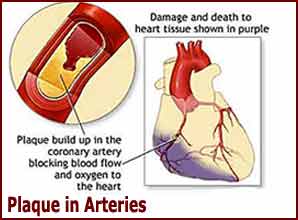
Plaque in Arteries
Generally, the smooth inner lining of a healthy artery allows proper blood flow. But after there is the accumulation of plaque, the arteries get hardened up and rough too. This becomes a deterrent to free blood flow. As the time passes, the tissue over the plaque get eroded and the inner core of the plaque gets exposed to the blood stream. This may result in the formation of a thrombus (a blood clot) leading to thrombosis (complete blockage). This results in a sudden decrease in blood flow to the heart muscle, leading to (myocardial infarction) heart attack.
According to some researchers, people who had problem of coronary artery calcification (CAC), were more likely to be victims of stroke casualties than those without it.
Coronary artery disease Diagnosis
The doctor takes into consideration, complete medical history of the patient and then undertakes a physical examination. The diagnostic procedures for coronary artery disease includes the following:
- Stress test (Also called treadmill or exercise ECG) – While the patient is walking on a treadmill, his heart, breathing and blood pressure, are monitored. This test detects coronary artery disease and also decides the safe levels of exercise after a heart attack or surgery.
- Cardiac catheterization – In this procedure, a contrast agent is injected into an artery and then x-rays are taken. This is done to locate any kind of narrowing or abnormalities.
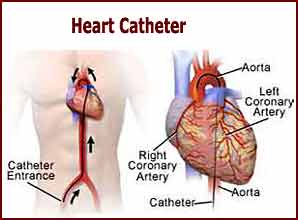
Cardiac Catheterization
- Nuclear scans –A vein is injected with a radioactive material and a camera is used to observe it after it is taken up to heart muscle. The fit and damaged areas can get detected.
How Is Coronary Heart Disease Treated?
The doctor determines the best treatment for you, keeping into consideration the base of the problem. Along with prescribing medication and lifestyle changes, he will have a look at the severity of your blockages and involved future risks. Following are the surgical treatments:
- Bypass Surgery
The most common procedure is Coronary Artery Bypass Grafting or CABG. Here, a part of the healthy blood vessel is taken from your leg, chest or arm. It is then grafted to your coronary artery, creating a new path for blood flow (bypass).
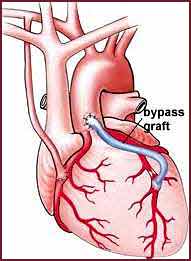
Bypass Surgery
It includes two kinds of procedures:
- Beating heart surgery – Also known as off-pump surgery. Surgery is performed when the heart is beating.
- Arrested heart surgery – Also known as conventional heart bypass surgery. Most of the CABG surgeries are done by making an incision in the chest when the heart is stopped.
- Minimally Invasive Treatments
It is an alternative to the CABG surgery, for patients with severe blockage and ischemia. Following are its three types:
- Coronary Balloon Angioplasty – In this process, a small balloon is guided to the blockage site and inflated to compress out the plaque, widening the artery.
- Stent Angioplasty– It is similar to coronary balloon angioplasty but along with the balloon, a stent is also used. The stent is mounted onto the balloon.
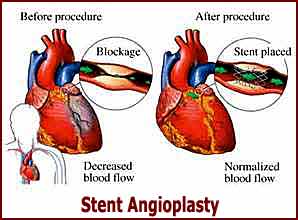
Stent Angioplasty
- MICS CABG – The process of beating heart procedure done by making an incision in a small rib instead of a median stentomy.
